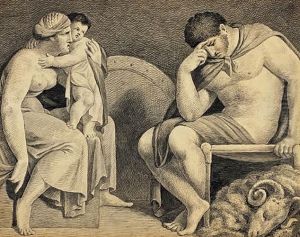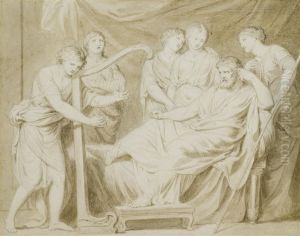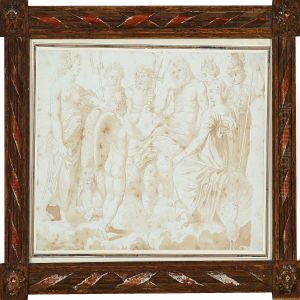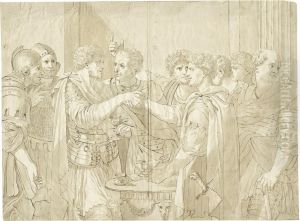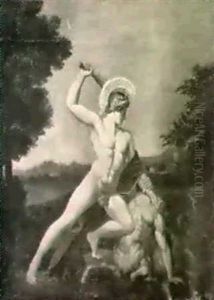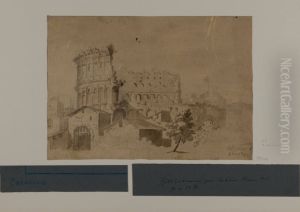Asmus Jacob Carstens Paintings
Asmus Jacob Carstens was a notable German painter, often considered one of the early precursors to Romanticism in art. Born on May 10, 1754, in St. Jürgen near Schleswig, in the Duchy of Schleswig (then part of the Danish crown but now in Germany), Carstens spent most of his life in relative obscurity, struggling with financial difficulties and a lack of formal recognition that persisted until after his death.
Carstens' early life was marked by hardship. His father was a miller, and his family's financial struggles meant that Carstens' access to formal education was limited. Despite these limitations, he developed a profound interest in drawing and painting. He managed to study art first at the Copenhagen Academy and later at the Academy of Arts in Berlin, where he was able to refine his skills and immerse himself in the study of classical antiquities and the Old Masters.
His artistic style was characterized by its emphasis on classical themes and ideals, a reaction against the Rococo style that was prevalent during his time. Carstens was deeply influenced by the ideals of the Enlightenment and sought to express the noble and heroic themes of classical antiquity. His work was marked by stark contrasts of light and shadow, strong lines, and a somewhat austere but powerful representation of the human form.
Despite his talents, Carstens' career was hampered by his outspoken personality and his refusal to conform to the artistic demands of his patrons. He was known for his high-minded idealism and his insistence on the freedom of artistic expression, which often put him at odds with the art establishment. This uncompromising attitude, along with his disdain for the commercial aspects of art, meant that he never achieved significant financial success during his lifetime.
Carstens moved to Rome in 1792, where he hoped to find a more appreciative audience for his classical approach to art. In Rome, he was part of a circle of German artists and was able to produce some of his most important works, inspired by the city's rich heritage of ancient art and architecture. Unfortunately, Carstens' time in Rome was cut short by illness. He died on May 25, 1798, at the age of 44, without having achieved the recognition he sought. It was only posthumously that his contributions to art were acknowledged, and he was later celebrated as a forerunner of the Romantic movement, which would come to embrace many of the values and aesthetic principles he espoused.
